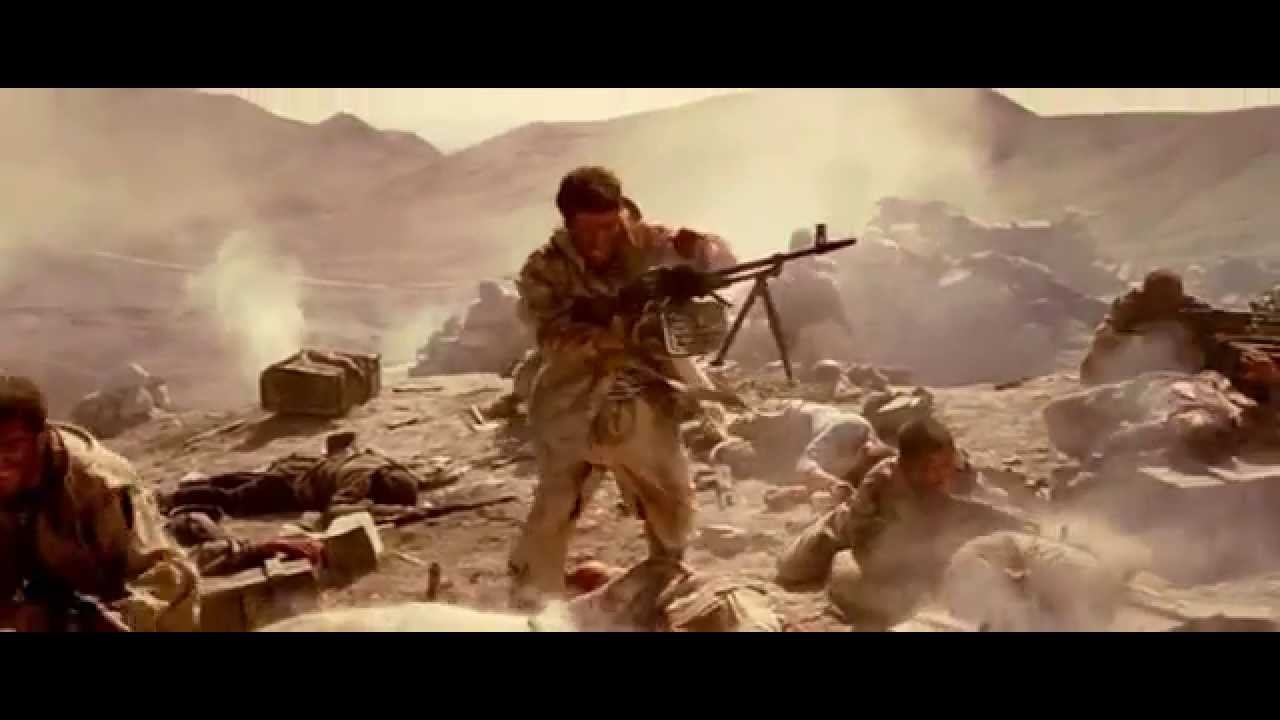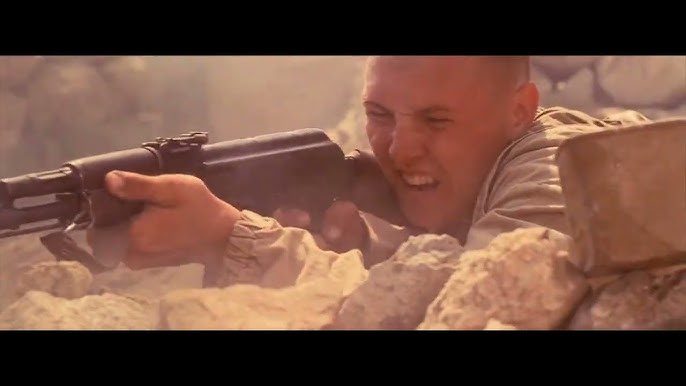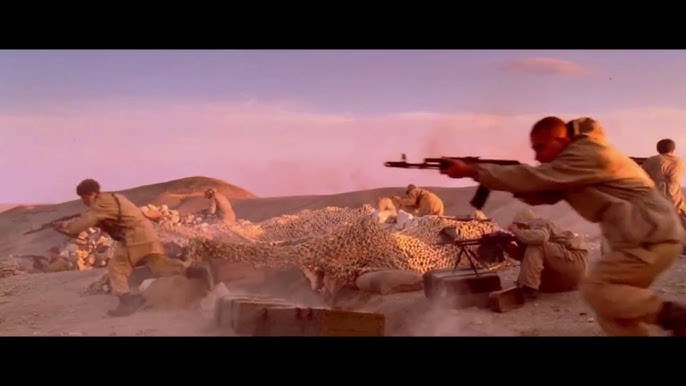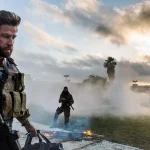🎬 9th Company (2005)

9th Company (2005) Movie Review: A Raw and Powerful Depiction of the Soviet-Afghan War
Introduction: A Gripping War Drama Based on Real Events
9th Company (2005), directed by Fyodor Bondarchuk, is a powerful Russian war film that depicts the Soviet-Afghan War, one of the most intense and often overlooked conflicts of the 20th century. Set against the harsh backdrop of the Afghan mountains, the film follows a group of young Soviet soldiers who are thrust into one of the deadliest and most harrowing battles of the war. With a mix of intense combat scenes, personal stories of courage and survival, and a deeply emotional narrative, 9th Company stands out as a poignant and raw portrayal of the human cost of war.
Based on real events, 9th Company chronicles the journey of a group of recruits as they undergo grueling training before being sent to fight in Afghanistan. The film showcases the brutal realities of the conflict, from the initial optimism and naïveté of the soldiers to the painful losses and emotional toll they experience on the battlefield. 9th Company is not just a war movie; it is a story about the human spirit, brotherhood, and the effects of war on young soldiers.
Plot Summary: The Harrowing Journey of the 9th Company
The film opens with a group of young Soviet recruits, who are sent to a training base where they are toughened up by harsh drills and rigorous exercises. Among them are three main characters: Shamanov, a leader who will become a central figure in the film; Sergeant Dygalo, a no-nonsense and cynical veteran; and the younger recruits, including the naive and idealistic soldier Vova. The recruits begin their training, which serves as an introduction to the harsh realities of the military life they will soon face in Afghanistan.
After completing their training, the 9th Company is deployed to Afghanistan, where they are tasked with guarding a strategically important mountain pass. The Afghan terrain, hostile to both the soldiers and the Soviet machinery, becomes the backdrop for a series of intense and often brutal encounters with the Mujahideen. The film portrays the soldiers’ disillusionment as they realize the war is not the heroic and just cause they were led to believe. The sense of isolation, the fear of death, and the emotional toll of war become central themes as the soldiers begin to question their purpose and the motivations of their superiors.
As the story unfolds, the 9th Company finds themselves in a desperate battle to hold their position against an overwhelming enemy force. The film’s portrayal of combat is raw and unflinching, highlighting the brutal nature of the conflict. The soldiers must fight not only the enemy but also the unforgiving terrain and the psychological toll of war. The harrowing battle sequences, accompanied by intense sound design and cinematography, create a sense of realism that pulls the viewer into the chaos of war.
The climax of the film is marked by the 9th Company’s last stand, where many of the soldiers, including Shamanov and Vova, are killed or severely wounded. The battle, though deeply tragic, underscores the themes of sacrifice, loyalty, and the futility of war. The emotional weight of the soldiers’ struggles is made even more powerful through the film’s focus on their personal stories, friendships, and the bonds they form in the face of death.
Character Development: From Innocence to Experience
One of the key strengths of 9th Company is its focus on character development. The film takes the time to introduce each member of the 9th Company, allowing the audience to get to know them before they are thrust into the horrors of war. Through these characters, the film explores themes of fear, courage, loyalty, and the emotional toll of combat.
The protagonist, Shamanov, is portrayed as a young man who starts off idealistic but is gradually transformed by the brutal realities of war. Initially, he is full of youthful optimism, eager to prove himself as a soldier and defend his country. However, as the war drags on and the casualties mount, Shamanov’s character undergoes a profound transformation. He becomes more hardened and disillusioned, realizing that the war is far from the noble cause he once believed it to be.
Sergeant Dygalo, played by the legendary Russian actor Konstantin Khabensky, serves as the voice of experience within the company. A cynical and hardened veteran, Dygalo provides guidance to the young recruits, but his tough exterior hides a deep sense of loss and despair. His character serves as a poignant reminder of the emotional toll that war takes on those who fight in it, as he struggles to reconcile his duty with the horrors he has witnessed.
Vova, one of the younger recruits, represents the innocence and idealism of youth. His character arc is one of growth and tragedy, as he is exposed to the brutalities of war and forced to confront the realities of the conflict. Vova’s transformation is a heartbreaking journey, as he matures rapidly in the face of overwhelming loss and trauma. His relationship with Shamanov and the other members of the company forms the emotional core of the film, as they all struggle to survive and maintain their humanity in the midst of chaos.
The chemistry between the characters is one of the film’s strongest aspects. The camaraderie and brotherhood that form between the soldiers, even in the face of overwhelming danger, adds a layer of emotional depth to the film. Their relationships evolve throughout the movie, shifting from naive optimism to a deep sense of loyalty and solidarity. This bond is ultimately tested in the final battle, where the soldiers must rely on each other for survival.
Cinematography: Capturing the Harsh Reality of War
The cinematography in 9th Company is one of the standout aspects of the film. Shot by Alexander Simonov, the film’s visuals are both beautiful and haunting, capturing the stark beauty of the Afghan landscape and the brutal reality of war. The mountainous terrain serves as a metaphor for the soldiers’ isolation and the constant danger they face.
The film’s combat sequences are intense and immersive, shot with a sense of immediacy and realism that heightens the emotional stakes. The chaotic nature of war is conveyed through rapid camera movements, intense close-ups, and handheld shots that put the viewer in the midst of the action. The sound design complements the cinematography, with the sound of gunfire, explosions, and the soldiers’ cries adding to the sense of chaos and fear.
The film’s use of lighting also plays a crucial role in conveying the mood and tone of the story. The harsh sunlight of the desert is juxtaposed with the deep shadows of the mountains, creating a sense of oppressive heat and danger. The contrast between light and dark reflects the emotional and psychological toll that war takes on the soldiers, as they move between moments of hope and despair.
Historical Accuracy: A Realistic Depiction of the Soviet-Afghan War
9th Company is based on the real experiences of Soviet soldiers who fought in the Soviet-Afghan War (1979-1989). While the film takes some creative liberties, it remains largely faithful to the historical events and the overall experience of the war. The Soviet-Afghan War was a conflict marked by brutal guerrilla warfare, harsh terrain, and an enemy that was difficult to defeat. The film accurately depicts the challenges faced by the Soviet soldiers, including the constant threat of ambushes, the lack of resources, and the difficulty of holding a position in hostile territory.
The film also addresses the political and ideological motivations behind the Soviet invasion of Afghanistan, although it does not delve too deeply into the broader geopolitical context. Instead, the focus remains on the soldiers’ personal experiences, offering a human perspective on the war and its impact on those who fought in it.
Themes: The Brutality of War, Brotherhood, and Sacrifice
At its core, 9th Company is a film about the brutality of war and the toll it takes on those who participate in it. The soldiers in the 9th Company are not heroes fighting for a noble cause but young men thrown into a senseless and brutal conflict. The film explores the emotional and psychological cost of war, depicting the trauma and loss that come with being on the front lines.
Brotherhood is another central theme of the film. The soldiers of the 9th Company form strong bonds as they face the horrors of war together. These relationships are portrayed with sincerity and depth, highlighting the ways in which soldiers rely on each other for survival and emotional support.
The theme of sacrifice is also prevalent throughout the film, as many of the characters give their lives for a cause that seems increasingly meaningless. The final battle, where the soldiers make their last stand, is a heartbreaking moment that underscores the futility of war and the ultimate sacrifice made by these young men.
Conclusion: A Harrowing and Emotional War Film
9th Company (2005) is a powerful and emotionally charged war film that offers a raw and unflinching look at the Soviet-Afghan War. With strong performances, stunning cinematography, and a deeply human story, the film captures the horror and tragedy of war, while also celebrating the courage, camaraderie, and sacrifice of the soldiers who fought in it. It is a film that resonates long after the credits roll, leaving the audience with a profound sense of the cost of conflict and the human spirit’s ability to endure.











